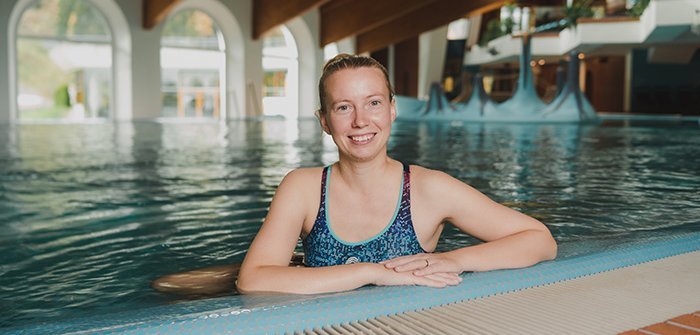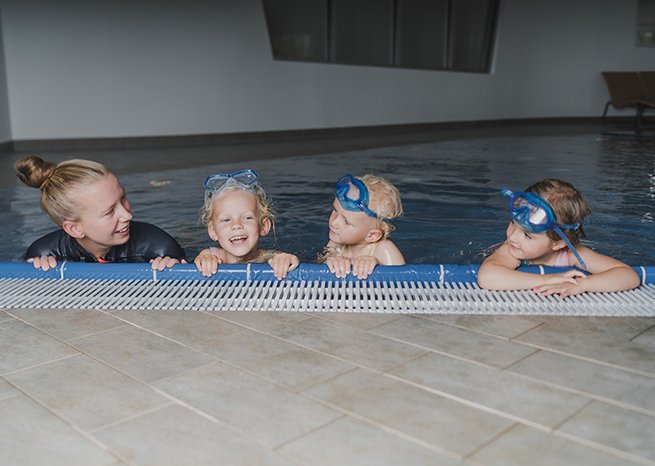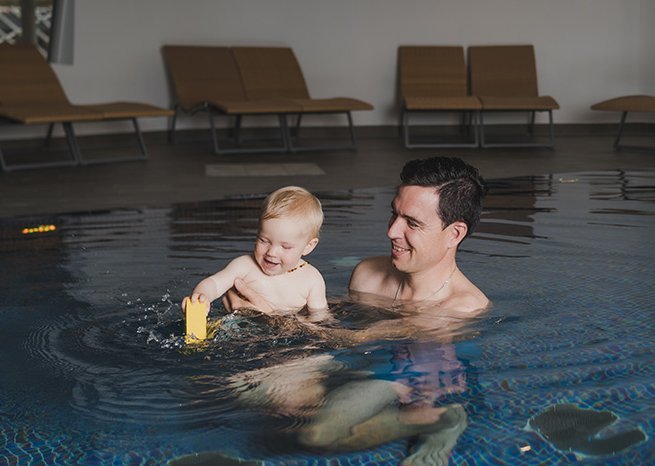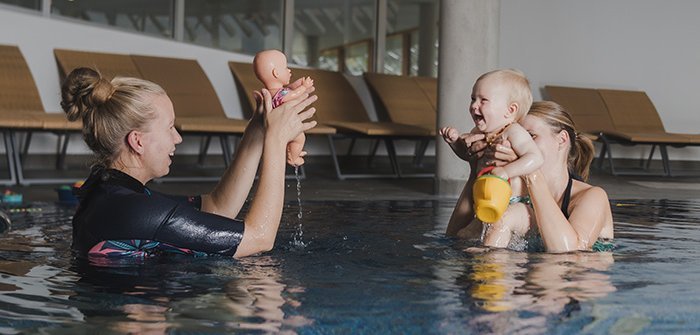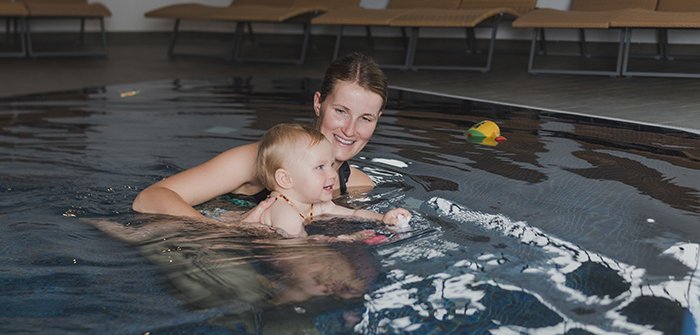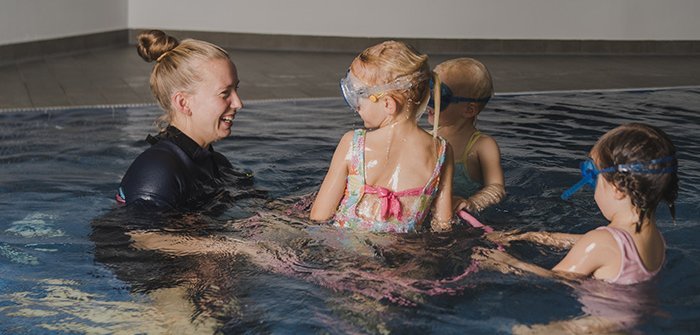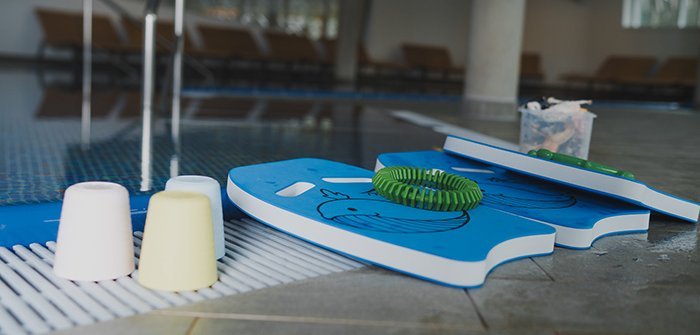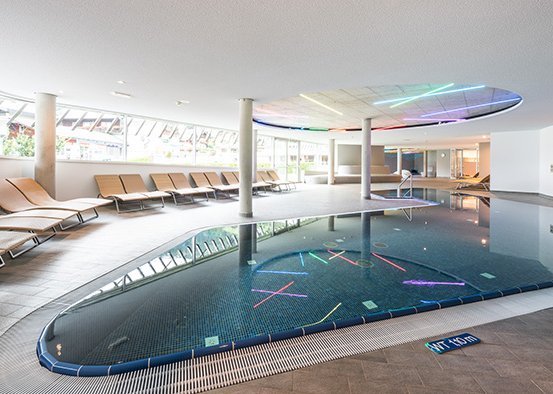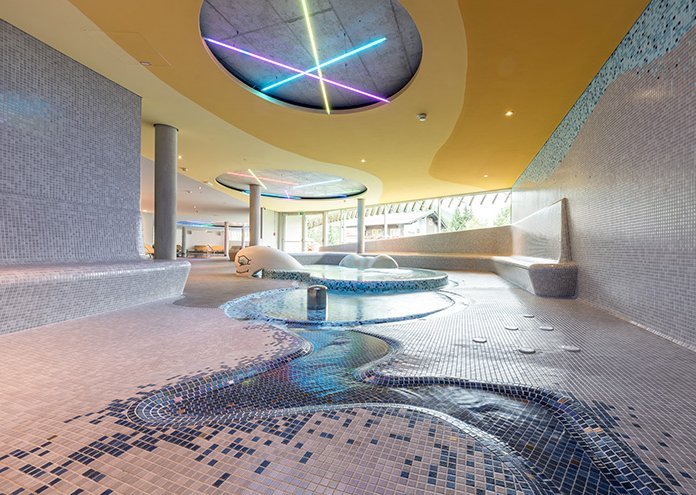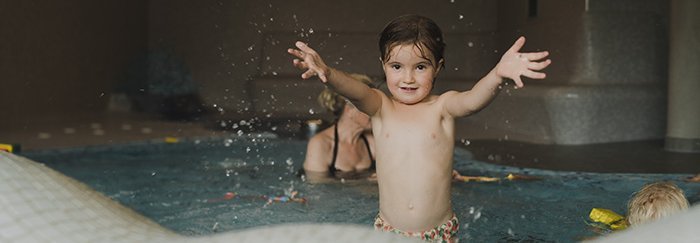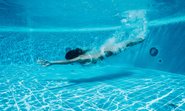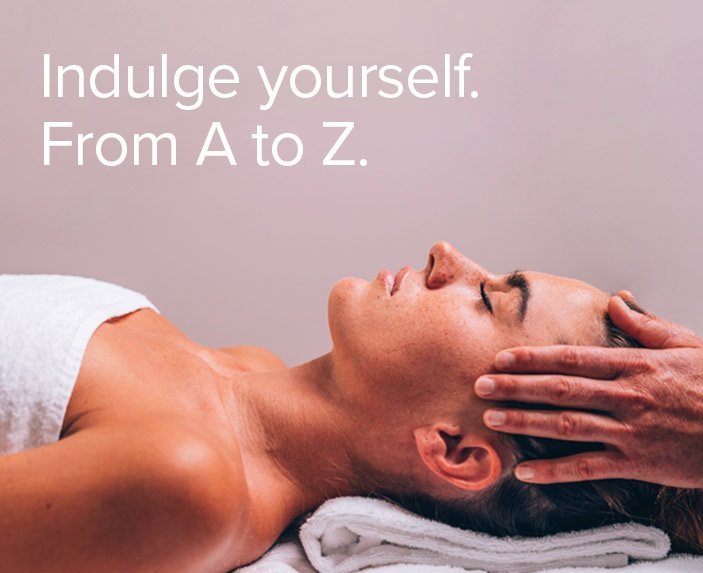First flow: Swimming for babies & children in the Thermal Römerbad
As humans we are simply fascinated with water. We drink it, wash ourselves with it and bathe in it. Even right at the beginning of our lives, long before we’re even born, it forms our first home in the protective womb. However, once we’re safely out the other side, it seems as if we have a longing to find our way back to the element that’s so familiar to us.
But why is it worth promoting the use of water from infancy? How does spending time in water at an early age affect development? And what options are there at the Thermal Römerbad for the first encounter with (thermal) water?
Let’s take a dive down together today. And by us I mean you and me, I’m Lara Trompisch, swimming instructor at the Thermal Römerbad. As a former competitive swimmer, it’s especially close to my heart to support even the smallest water babies in their first experiences in the water. Happy reading!
Getting a head start…
A dip into the water is worthwhile even in infancy. At that point, the time in the protected womb is not too long ago and the little ones can maintain the positive relationship with the water. To ensure this relationship is not lost, the Thermal Römerbad offers a complete range of swimming courses for beginners: from babies and toddlers to kindergarten and school children. After that, from about 3.5 years of age, it is possible to start learning first swimming techniques.
By the way: babies have an innate reflex so that they automatically hold their breath when their face comes into contact with water. However, this reflex disappears in the first few months.
The effect of water.
When we swim, we train our muscles, promote endurance and reduce stress. Spending time in the water has many other positive effects on a child’s development:
- Physical abilities: Gravity prevents infants from moving about in a way they would like when on land. In the three-dimensional movement space, on the other hand, many movement sequences feel easier and come more naturally. In the baby and children’s swimming course, we therefore focus on the awareness of one’s own body in the water. With support from their parents, the children glide along almost weightlessly, explore their motor skills and learn how to manage buoyancy and resistance. The better the children can handle it, the more confident and selfassured they become. And let’s be honest: have you ever seen a child that’s not pleased at what they can already do in the water?
- Safety and independence: being in water regularly and from an early age is of great importance, especially for their own safety when swimming and splashing around. After all, it’s not just about overcoming the fear of water, but also about sensitising the children with regard to possible dangers. For this reason, we teach the children how to interact with and in the water in a safe and respectful way during the swimming lessons, so that they can protect themselves from drowning in an emergency. This includes exercises for the youngest children to independently climb out and in at the edge of the pool, as well as exercises for orientation and floating in the water as the children get older.
- Social skills: spending time together in the water also strengthens the parent-child relationship. After all, communication takes place primarily through the skin and allows the child to feel the familiar security even in the water. In the groups without parental guidance, we then focus more on social interaction in the water and consideration for other swimmers. The children also learn the rules of swimming and correct behaviour in the swimming pool in a playful way.
- Health: The stimulation of the water literally gets under your skin, as it stimulates the neuromuscular and sensory systems and promotes blood circulation. This not only has a calming and relaxing effect, but also strengthens the cardiovascular system, the muscles and the immune system.
So it makes sense to actually work on your swimming on top of the happy splashing every now and then. Whether that be in the bathtub or in the swimming pool. And it’s even more fun with mum or dad anyway.
I’ve got my swim bag packed…
Several towels, a swim nappy for babies, swim shorts or a bathing suit for children, slippers and armbands should not be missing from any swim bag. You should regularly educate older children on water safety – but make sure you don’t frighten them.
The first swimming course.
In the Thermal Römerbad I offer various possibilities for children’s first encounter with the water, but I also have options for little water crocs that are already quite confident. In small groups with a maximum of three children, I can respond individually to each child and support their swimming level with focused exercises.
- Water Frogs (6 - 12 months): During a playful exercise session in the water, we learn safe holding and grasping techniques and encourage early movement development.
- Penguins (1 - 3 years): We learn about the basics of getting used to water and various swimming aids in a fun way.
- Flipper swimming lessons (from 3.5 years) for beginners and advanced swimmers: with elements such as gliding, diving, floating and orienteering, we get used to the water and learn the first and second swimming strokes.
Please note: parents must always accompany children during the baby and toddler swimming courses. It is only in the beginners’ courses from 3.5 years that children are allowed to explore the water without parental guidance.
You can find more information about the courses on my website.
If you’re interested or have any questions, please contact me directly, Lara Trompisch at office@dolphinswim.net.
Swimming lessons at the Thermal Römerbad.
But there’s also a lot to discover outside the courses at the Thermal Römerbad. In the children’s pool and paddling pool with floor bubbler, water jet, whale and stream, the little ones can get out all their energy in a safe environment.
By the way: The thermal water from the Bad Kleinkirchheim spring is safe for children and the minerals it contains benefit even the smallest swimmers. Babies can splash around in the 34°C warm thermal water from as early as 13 weeks of age – but only if they’re fit and healthy. If you’re unsure, it’s best to discuss it with your paediatrician first. After a visit to the Thermal Römerbad, make sure you shower off thoroughly, dry off and dress warmly. Moisturising creams also protect baby’s delicate skin from drying out.
I look forward to welcoming you and your little ones to swimming lessons at the Thermal Römerbad soon. And sure while you’re here you may as well pay a nice visit to the sauna or enjoy a relaxing massage?

